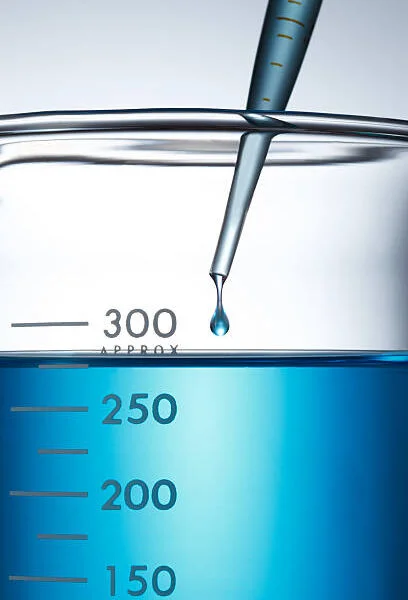Chemical reactions form the backbone of countless natural processes and industrial applications. Among these reactions, the interaction between formic acid (HCOOH) and methylene (CH₂) to produce water (H₂O) represents an interesting case study in organic chemistry. This article will break down the components, reaction mechanisms, and implications of this chemical process.
What is HCOOH (Formic Acid)?
Formic acid, with the chemical formula HCOOH, is the simplest carboxylic acid. It naturally occurs in the venom of ant stings, which is where its name originates—formica is Latin for ant. Formic acid is a colorless liquid with a pungent odor, and it’s widely used in industrial applications, including leather production, preservatives, and as a reducing agent in chemical reactions.
Key Properties of Formic Acid:
- Molecular formula: HCOOH
- Molar mass: 46.03 g/mol
- Boiling point: 100.8°C (213.4°F)
- Uses: Textile processing, leather tanning, antibacterial agent in livestock feed, and as a solvent in chemical laboratories.
What is CH₂ (Methylene)?
Methylene (CH₂) refers to a divalent carbon group, meaning it has two unpaired electrons and can form two bonds. In many cases, methylene is highly reactive and exists as a part of larger organic molecules. In its isolated form, methylene is a reactive carbene species, often represented as :CH₂ (indicating two non-bonded electrons).
Key Properties of Methylene:
- Molecular formula: CH₂
- Structure: A carbon atom with two hydrogen atoms and two reactive sites.
- Reactivity: Highly reactive, especially in the presence of acids or other electrophilic species.
Reaction Overview: HCOOH + CH₂ → H₂O
At first glance, this reaction suggests an interaction between formic acid and methylene to produce water. However, in practical chemistry, this reaction needs to be interpreted in terms of reaction mechanisms and intermediate steps. The production of water indicates a dehydration or condensation reaction, which is common when acids react with reactive carbene species like methylene.
Possible Reaction Pathway:
- Formation of a Reactive Intermediate:
When formic acid reacts with methylene, a highly reactive intermediate may form. The carboxyl group in formic acid can interact with the methylene carbene, leading to bond rearrangement. - Dehydration Process:
As bonds shift, a molecule of water (H₂O) is released. This is a typical step in many condensation reactions, where two molecules combine with the elimination of water. - Formation of a New Organic Compound:
After the water is released, the remaining atoms can form a new compound, possibly a substituted formaldehyde or another organic structure depending on the specific conditions and catalysts involved.
Real-World Applications of Similar Reactions
While the specific reaction HCOOH + CH₂ → H₂O may not be widely documented in this exact form, the chemistry behind it is fundamental to many industrial and laboratory processes. Here’s how similar reactions play a role in various fields:
1. Organic Synthesis
In organic chemistry, reactions involving carbenes (like methylene) and acids (like formic acid) are crucial in synthesizing complex molecules. These reactions are often used to form alkenes, aldehydes, and other essential organic compounds.
- Example: The Wolff-Kishner reduction is a well-known reaction where hydrazine (N₂H₄) reacts with carbonyl compounds to form alkanes, with water as a byproduct.
2. Industrial Applications
Dehydration reactions, where water is removed to form new compounds, are common in industrial processes such as plastic production, pharmaceutical synthesis, and petrochemical refining.
- Example: The dehydration of alcohols to form alkenes is a key step in producing materials like polyethylene.
3. Environmental Implications
Understanding reactions that produce or consume water is crucial in environmental chemistry. For instance, formic acid is used as a hydrogen storage material in fuel cells, releasing hydrogen when it decomposes.
- Example: In formic acid fuel cells, formic acid decomposes into carbon dioxide and hydrogen, with water playing a key role in the process.
Challenges and Considerations in the Reaction
1. Reactivity of Methylene
Methylene (CH₂) is highly reactive and unstable in its free form. In most laboratory settings, it needs to be stabilized or generated in situ (within the reaction mixture) using catalysts or precursor compounds.
2. Control of Reaction Conditions
Reactions involving formic acid can be sensitive to temperature, pressure, and the presence of catalysts. Overheating can lead to unwanted side reactions, such as decomposition into carbon monoxide and water.
3. Safety Considerations
Both formic acid and reactive carbenes like methylene require careful handling. Formic acid is corrosive and can cause skin burns, while methylene, due to its high reactivity, can be hazardous if not controlled properly.
Conclusion
The reaction between formic acid (HCOOH) and methylene (CH₂) to produce water (H₂O) highlights key concepts in organic chemistry, such as condensation reactions, carbene reactivity, and dehydration processes. While the specific reaction may not be commonly encountered in its isolated form, the underlying principles are fundamental to both academic research and industrial applications.
By understanding the properties of the reactants and the mechanisms at play, chemists can harness these reactions to develop new materials, synthesize complex molecules, and innovate in fields ranging from pharmaceuticals to environmental science. Whether you’re a student, researcher, or chemistry enthusiast, exploring the nuances of such reactions offers a deeper appreciation of the intricate world of chemical interactions.










